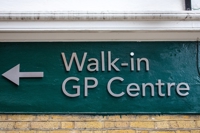
In the dreams of too many politicians, tax and spending policies can be used to pump up growth, while central banks can somehow painlessly cream off the inflationary froth. That can most politely be described as the consequence of years of low inflation, with interest rates bumbling along not far from zero. Time for a trip down memory lane…
Governments have a weakness for inflation. That’s partly because, in real terms, it usefully erodes the burden of their debt; it’s also because, however disruptive it may be, curbing it is electorally extremely painful. Historically, it’s only been when the disruption became catastrophic, through hyperinflation, the breakdown of civil society or financial crisis, that governments were willing to grit their teeth. And because of their known weakness (and hence credibility) on the subject, counter-inflationary disciplines have to involve forces at least partly beyond their control.
These have broadly been of three kinds: one, public “rules” whose breach will seriously embarrass the government that set them; two, locking the home currency to one belonging to a less-inflationary economy; or three, relying on an independent institution to take the difficult decisions. All have been tried during the past century, and some have worked, but it remains true that none can unless, fundamentally, the government is up for the pain.
Back in the day…
For Germany, the defining moment of trauma came in 1923, when the currency’s exchange rate to the dollar rose from 17,000 marks in January to 4,200 trillion marks in December. German hyperinflation may have passed out of living memory, but was still sufficiently burnt into the national psyche in the 1990s to start the European Central Bank off on a credibly conservative path.
The United States was jerked up the learning curve by financial crises before and between the two world wars, into the development of a robust Federal Reserve System with sound money objectives - although postwar inflation has been notably higher in the US than in Germany, it has never reached hyper-levels.
In the UK, it was the 1970s, whose “stagflation” is now being glumly recalled, that marked the turning-point. After a spike in energy prices, inflation topped 25% in 1975. Then followed a crisis that forced the Callaghan Government to apply in 1976 for help (and therefore direction) from the International Monetary Fund. This very public humiliation helped to ensure that in 1979 there entered, stage right, the Thatcher Government, which plunged enthusiastically into “monetarism”.
In 1976, Britain’s year of the IMF, Milton Friedman was winning the Nobel Prize for Economics for his seminal work on the “natural rate” of unemployment. Probably the greatest economist of the second half of the twentieth century, he was certainly the most influential and wide-ranging. But a focus on the monetary aggregates led some of his disciples to adopt to a form of targetry that quickly ran into trouble.
The principle was simple enough. Inflation is a monetary phenomenon. Control the growth in the money supply, and you’ll control inflation. It was a great insight, but once expressed in targets, the difficulties became clear. There’s no unambiguous definition of “money”. Even in the 1980s, let alone in today’s more digital world, there was a whole penumbra of “quasi-money”, and the velocity of its circulation was highly variable. The temptation to lock on to the aggregate that gave you the answer you wanted was enormous.
So the Thatcher Government set a range of “M” targets for narrow and broad money which began to sound like the entire motorway system, draining the “rules” of the simple credibility Ministers yearned for. They weren’t alone: Paul Volcker, at the Federal Reserve, also started setting targets (for M1 and then M2) in 1979. The Bundesbank had already done so. But the battle raged fiercest in the inflation-prone UK. Interest rates were raised to 15%, cutting a swathe of bankruptcies through British industry.
There was just one year - 1982-83 - when monetary growth actually hit all the Government’s targets. The Treasury presented the outgoing Chancellor with a framed chart recording this unique event. His successor’s eyes already were already straying to another target: the sterling exchange rate.
The search for a new discipline culminated in Britain’s membership of the European Monetary System (ERM) in 1990. The ERM was a forerunner to the euro: national currencies remained, but were supposed to be maintained within exchange-rate bands against each other. In joining, the UK Government hoped to check the country’s persistent habit of depreciating its way out of uncompetitive pay increases. But for sterling, membership was unsustainable, and in just two years it fell ignominiously out of its band. So that experiment was over even more quickly.
In 1992, the EU began its progression towards a single currency and central bank, which was fully operational by 2002. Meanwhile the UK had adopted the third kind of discipline: a central bank free to set interest rates. Formal independence of the Bank of England came with the Blair Government in 1997, so that the UK central bank looked much more like the ECB or the Fed. A nine-person Monetary Policy Committee was supposed to provide the diversity of view which in the US and the Eurozone comes from an inbuilt regional perspective.
As financial authorities, all these institutions were tested and found wanting by the crisis of 2008, which followed a massive credit bubble and saw some very nineteenth-century-style banking collapses. The recession that followed led to a new monetary policy fashion, “quantitative easing” - pumping money into the economy by buying public debt, which lowered rates and helped governments to borrow.
Starting from here…
In the “recovery” from Covid, supply chains broke, commodity prices jumped and labour markets tightened (see Who wants to work? June 2022), piling up cost pressures even before Russia invaded Ukraine. So as central backs face today’s severe monetary test, it’s tempting to repeat the unhelpful advice given the disorientated tourist trying to find the way to Tipperary: just don’t start from here.
Central banks are now facing into high and rising inflation with fragile economies, interest rates at historic lows and a load of public debt on their books. They have been slow to act, but more than three-quarters of the central banks for which the Bank for International Settlements publishes data have increased their policy rates over the past six weeks.
The ECB’s reluctance was most understandable, given higher unemployment than in the UK and the US, and great complexity in calibrating monetary policy to very different regions of the Eurozone. But at its July meeting the ECB agreed a 50 basis point increase in key rates - balanced by a new Transmission Protection Instrument, with which the ECB will (perhaps) buy the government bonds of countries suffering from “disorderly” interest-rate rises, although only (note well) if these countries are doing all the right things fiscally.
In the US, the Federal Reserve has been scrambling to catch up with an overheated economy under a hail of criticism. Despite early signs of slowdown, its Open Market Committee (FOMC) responded in July by whacking the Fed Funds Rate up 75 basis points (to a target range of 2.25-2.5%).
Third to up its game is the Bank of England, which was also a late starter, but had raised Bank Rate a quarter-point five times by June. On August 4th its Monetary Policy Committee concluded that although the economy was weaker than it expected in May, labour markets were tighter than expected, and were helping to spread the inflation infection from energy costs to domestically-generated prices. The Bank’s inflation forecast rose to a peak of 13%. It therefore added a full half-point to Bank Rate while forecasting a recession starting in the fourth quarter of the year and persisting through 2023.
So what next?
Well, the Fed insists it’s going to nail inflation, whatever, and is threatening another big interest rate hike in September. The ECB has made tough noises too, though its policies are more nuanced. In the UK, the Governor of the Bank of England kept repeating that there were no “ifs or buts” about its determination to do its counter-inflation job, but there was in fact one big “if”.
As he pointed out, in the UK, unlike the US, it is the Government that lays down the “independent” central bank’s inflation objective. So a new Prime Minister could flex it. But (which he of course didn’t say) only with a careful eye on the markets, since bar one tweak (using the Consumer Price Index rather than the Retail Price Index to measure inflation), that inflation objective has remained fixed at 2% since 1997. And that’s been the average inflation rate over the period.
For here’s the thing. Expectations matter. When it comes to central banks, the financial markets take past performance as a guide to the future. Since the mid-1990s, the UK has built up a great chunk of monetary policy credibility that was lacking in the 1970s. Throw it away, and it will take another generation to buy it back.
So what would the markets say to a Government that adds a big fiscal boost? On August 4th, the Governor could duck the hypothetical question, and traditionally the Bank likes to stay mum on fiscal policy. But its message is clear enough: with demand still running above the economy’s current post-Brexit capacity, some cooling-off is needed if you really want to get inflation under control.
And that means, in turn, that help to pay this winter’s bills should be “targeted” - a polite way of saying, reserved for the most vulnerable. It will take a bit of number-crunching to work out exactly what’s happened to the Government’s room for manoeuvre, because recession (negative) and inflation (positive) have contradictory effects on public revenues, and meanwhile the pressure inflation brings for higher pay in understaffed public services (notably the NHS) simply can’t be ignored. But broad fiscal expansion would plainly put pressure on the Bank to raise interest rates more.
Which is not, of course, to say that the Bank has got the route all right and tight. We are way off the old map. The Bank is still cautious about reversing quantitative easing, preferring to use interest rates. But it’s far from clear it can reliably model the effect of an historically sharp rise from historically low rates.
And indeed, if you dig into the Bank’s latest report, you can quickly find an even more obvious source of doubt. In its central scenario, the Monetary Policy Committee assumes energy prices flatten out in 2023-24; but the future markets show them declining. And if energy prices follow that path, inflation would - according to the Bank’s “alternative scenario” - actually undershoot its two-year target, while more output would be lost. At which point, of course, a Governor currently being abused for acting too late would be condemned for overkill.
Ah well, that’s what central bankers are paid for. They’re steering a ship that takes a long time to respond to the wheel. The rocks are close on both sides. By good judgement, or more often good luck, some prove to be better at the helm than others. But the history of monetary policy tells us that passengers will have more confidence inflation will be brought under control if the pilot sets an independent course - and Westminster tries not to muddy the waters.
Guest Author: Baroness Sarah Hogg, Former Frontier Economics Chairman



